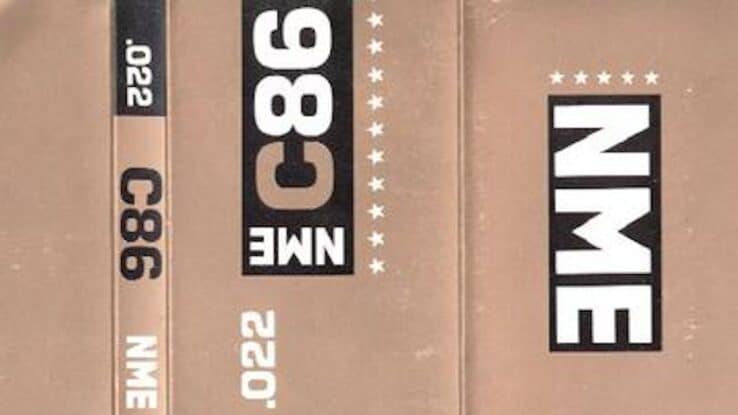Music

WTF is...?
WTF is… C86?
Our series of deep dives looks at the compilation tape that launched a whole genre
Back in 1981, NME came up with the idea of putting together a compilation to represent the freshest sounds of the day. For two coupons and the princely sum of £1.50, you could get an 18-track cassette featuring Scritti Politti, The Beat, Pere Ubu, Orange Juice, John Cooper Clarke, The Raincoats, Aztec Camera and more. The whole venture, titled C81 (cassette 81), sold 25,000 copies. Job done.
Five years later, NME writers Roy Carr, Neil Taylor and Adrian Thrills decided to revisit the concept. NME was locked in a battle for domination of the newsstands with Melody Maker and the idea of a compilation that showcased the magazine’s direct line to rising talent seemed a sure-fire winner.
The principle remained the same: two sides of songs by up-and-coming independent bands, all collated on a cassette available only via mail order. And why not? C81 had exceeded expectations and the 80s indie movement was in even ruder health five years down the road. But where C81 was broad in scope, C86’s narrower vision was the true stroke of genius.

The results were immediate but the impact is still reverberating. You can’t plan for cultural relevancy but C86 didn’t so much encapsulate a moment as create one. Up until that point, the flourishing wave of UK indie didn’t have anything to tie it all together. The compilation’s prescience was so on point that the genre it created borrowed its name.
Many of the acts included have gone on to become stalwarts of UK indie. The two bands that bookend C86 are also maybe its biggest success stories. Primal Scream and The Wedding Present both found widespread success throughout the next decade and beyond. The Pastels and The Soup Dragons came of age in the same Glasgow scene that begat Teenage Fanclub, The Jesus & Mary Chain, The Vaselines and the BMX Bandits. The latter were so irked by NME’s refusal to include them on the compilation that they went and called their next album C86.
As a compilation, C86 covers a lot of ground but finds plenty of commonality across its 22 songs. If you hang around sad people who like jangly guitars, you’ll have probably already heard it mentioned with deep reverence. Even in 2023, C86 (alongside kindred spirits K-Recs, Postcard and Sarah Records) is used as an umbrella term for lo-fi, twee, rainy day indie pop. Shambling, John Peel called it. Outside of The Smiths and R.E.M. – both of whose influence is keenly felt on C86 – guitar music in 1986 was big, brash and loud, and losing ground to hip hop. The 22 songs of C86 took it back to small clubs and bedsits, where The Byrds, The Buzzcocks and The Beach Boys held sway.

As both a collection and a movement, C86 was devoid of machismo. The music was bright and melodic, the lyrics often vulnerable and open, the politics were left-leaning (which seems a tame description of a band like McCarthy) and women were well represented (Shop Assistants, Miaow, The Pastels, We’ve Got A Fuzzbox…), a welcome change from the wastelands of 80s mainstream rock. Its earnest, DIY, anti-status quo ethos was a bit like the punk movement with all the aggression displaced by thoughtfulness. From one cassette sprang generations of zines, clubs and lo-fi indie pop.
Those characteristics and principles have remained ingrained in the genre’s contemporary followers, from Ducks Ltd to The Umbrellas, Tallies to Alvvays, Rolling Blackouts Coastal Fever to Dick Diver, Belle and Sebastian to US Highball, Chime School to Swansea Sound. Few of the actual bands on C86 went on to set the world alight. Many disappeared soon afterwards, but the lasting legacy is proof that the compilation’s success was in how it united an audience in desperate need of a scene to grab hold of.

In that sense, C86 was very much a sudden burst of flame in the dark. It didn’t change the musical landscape the way that grunge did; the bands involved were too defiantly lo-fi for that to ever happen. Instead, it gave name to something, like a marine biologist hauling something out of the depths, tagging it and setting it back on its way again.
In 2021, the Captured Tracks label took inspiration from C86 and created Strum And Thrum, an album that retrospectively looked at what was happening in the US at the same time. Its creators unearthed an entire generation of bands that used R.E.M. as a jumping-off point to create sensitive, jangling indie pop, bands who had largely been forgotten for decades. Like C86, it created a scene, albeit several decades after the fact.
Nowadays, we’ve got Spotify algorithms to uncover new music and bands have social media to help create scenes across cities and countries. The musical landscape of 1986 had zines and compilation tapes, but it’s hard to think of any that left the same kind of imprint almost 40 years later. For fans of indie pop, from The 1975 to The Reds, Pinks & Purples, delving into it is like a Who Do You Think You Are? for an entire genre; charting its evolution while discovering a whole slew of bands you’ve probably never heard before. At the very least, it’s a great way to drop an awful lot of money on Discogs.
The Wedding Present tour the UK in May 2024
Main image: NME/Rough Trade









